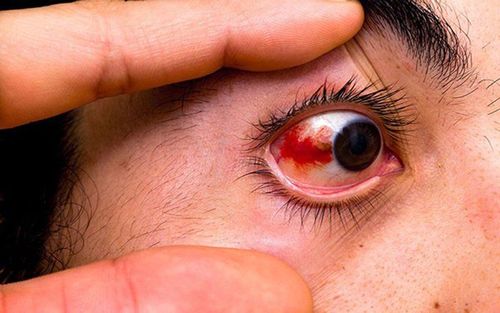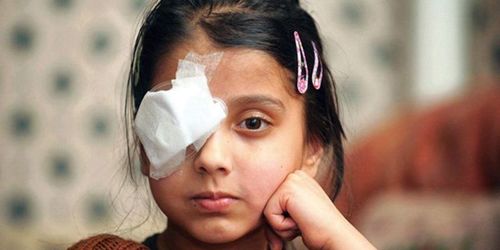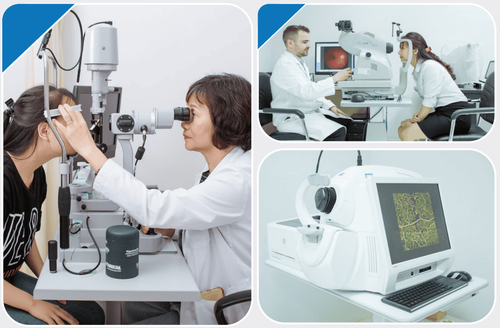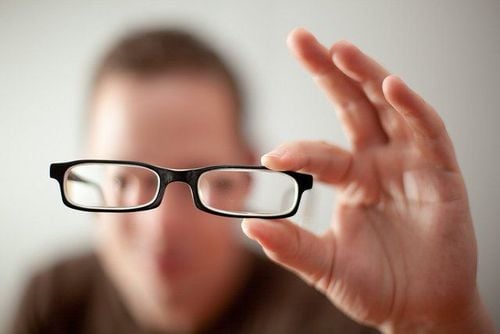This is an automatically translated article.
In addition to common refractive errors such as nearsightedness, farsightedness or farsightedness, young children can also have other vision problems such as strabismus and amblyopia. So what's the difference between strabismus and amblyopia?
1. Cross-eyed and things to know
1.1 What is cross-eyed? Strabismus is a lack of coordination between the eyes, the direction of the eyes looking in different directions (not in the same direction) or not focusing on the same object.
Strabismus, if not treated in time, will make the vision of one eye worse. This condition is called amblyopia or "lazy eye". Perception of three-dimensional space (depth) may also be compromised.
1.2 What causes strabismus? Sometimes crossed eyes are congenital. This condition seems to run in families.
Strabismus can also appear in children with no family history and is sometimes a symptom of a more serious vision problem. (Disorders such as: Cerebral palsy and Down's syndrome increase the chance of cross-eyed.)
Children with farsightedness, premature babies are also at higher risk. Premature babies are extremely disadvantaged, because they are very susceptible to diseases and complications. Therefore, when taking care of premature babies at home, parents need to have a special diet for premature babies to help them adapt and develop as well as normal full-term babies.

Trẻ sinh non là đối tượng rất dễ có nguy cơ mắc bệnh và để lại biến chứng
1.2 How to tell if a child has crossed eyes? Strabismus often has the following symptoms:
Physical symptoms are easy to recognize when looking in a mirror or people around will see the eyes are deviated.
In addition, to know if the child has crossed eyes or not? You can check by:
You stand opposite and look directly into the eyes of the person to be examined. If you find that the eyes of the person to be examined are not symmetrical, the person is most likely crossed. Or you can check if your child has crossed eyes by: You give him a toy that he likes, look closely to see if the child looks at the toy, if the child's eyes are tilted to one side, it is very The child may have been crossed. 1.3 Treatment of strabismus When the child shows signs of suspicion of strabismus. You should talk to your ophthalmologist for advice. In children under 3 years of age, when the disease is detected early, the success rate is up to 92% after treatment.
For the best diagnosis of strabismus, the eyes need to be checked periodically every 1-4 months for timely detection and appropriate treatment.
2. What is amblyopia?
While the cause of strabismus is the lack of synchronization of the oculomotor muscles between the eyes. The cause of amblyopia is the result of a lack of connection between the brain and one eye.
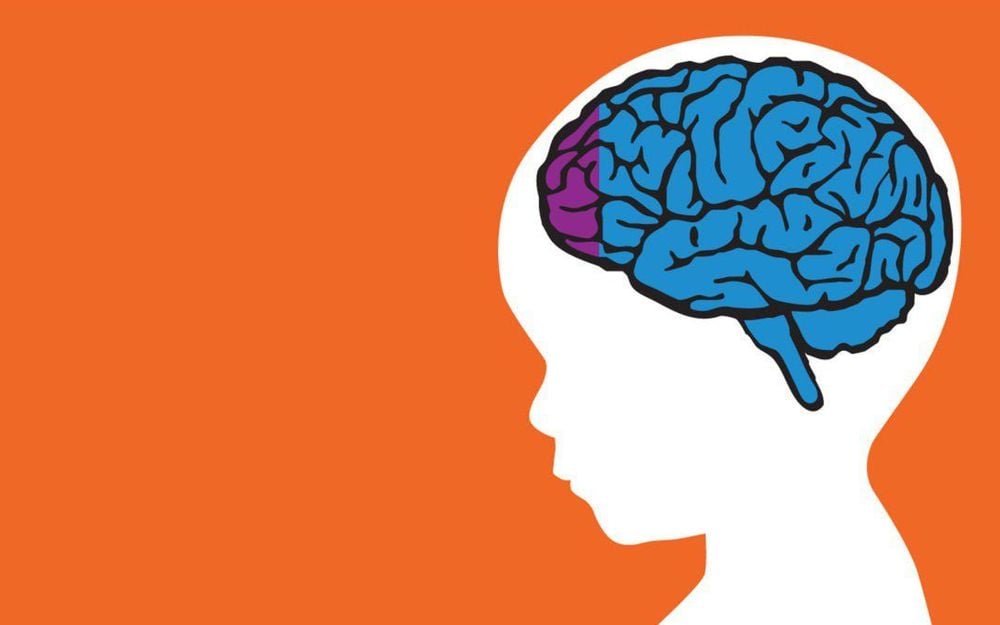
Nhược thị là hậu quả của sự thiếu liên kết giữa não với một bên mắt
2.1 What is amblyopia? Amblyopia is a condition in which the vision of one or both eyes is reduced because the brain does not recognize the images that the patient's eyes transmit, causing the brain to increase its activity with only one eye. This phenomenon is also known as lazy eye.
The rate of amblyopia in children under 6 years old accounts for about 3%. After the age of 7, the brain and optic nerve have stabilized, so any treatment after this time is often less effective. Therefore, the most successful treatment is the period before the age of 5 or 6 years.
2.2 How to know if a child has amblyopia? Common signs in amblyopia:
Strabismus: This is a phenomenon where the eyes are directed in two different directions. Refractive abnormalities such as nearsightedness, farsightedness, astigmatism. Turbidity of the transparent parts of the eye such as the lens prevents vision from developing. Other manifestations such as squinting, eye strain or neck tilting when seeing is not clear. 2.4 How to test amblyopia at home? This is a simple way to find out if both of your child's eyes are normal.
Cover one of your child's eyes (this is more convenient with an extra helper). Hold an object (such as a teddy bear for a small child or a picture or letter for an older child) in front of the child. See if your child follows the object with his or her eyes as you move the object from side to side and up and down. Then cover the other eye and see if the child follows the object.

Bạn dễ dàng kiểm tra bệnh nhược thị cho bé tại nhà
2.5 Treating amblyopia Wear glasses: If your child has amblyopia and needs glasses, wearing glasses will help the brain get a clearer picture, which can improve the connection between the eyes and the brain. Eye patch : Your doctor will probably recommend an eye patch to protect your eyes and correct weak eyes. Eye drops: In case the child completely refuses to wear the eye patch for the necessary time, parents can give the child eye drops instead. Surgery: If a child has amblyopia caused by strabismus and treatments such as patches, glasses, and medications do not improve their vision, surgery may be the best treatment. Eye muscle surgery or correction of defects such as drooping eyelids, cataracts can treat amblyopia in children. Today, amblyopia and strabismus in children are very common, especially when children are 6 months old. Therefore, parents need to pay attention to the signs of this disease to take their children to early treatment, the chances of being cured will be higher. If not treated early, the disease can affect vision permanently. When the eye is left untreated, the brain ignores the images the eye receives, leading to permanent disability.
In order to limit refractive errors in children, Vinmec International General Hospital launched a refractive error screening package. When registering for Vinmec's Refractive Error Screening Package, customers will receive:
Screening for refractive errors (strabismus, nearsightedness, far, astigmatism, amblyopia) through general and regular eye exams.

Vinmec cung cấp gói tầm soát tật khúc xạ nhằm hạn chế các tật khúc xạ ở trẻ
Follow up, manage periodically for 1 year for patients with refractive errors. With the refractive error screening package at Vinmec, there are outstanding advantages such as:
Early and accurate detection of refractive errors Customers are consulted, examined, and guided for comprehensive care to ensure the couple's health. eyes and improve eyesight. The modern American Spot Vision Screener machine measures refractive errors for children aged 6 months and older, with high accuracy, proven by measuring the eyes of nearly 40,000 children in Vietnam - data as of October/October/ 2017. Assessment of visual function for children who cannot speak by modern equipment of international standards. A team of doctors, nurses and technicians with many years of experience, trained and trained in medical science developed countries around the world.
Please dial HOTLINE for more information or register for an appointment HERE. Download MyVinmec app to make appointments faster and to manage your bookings easily.
Reference source: babycenter.com



